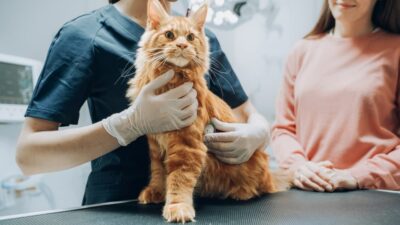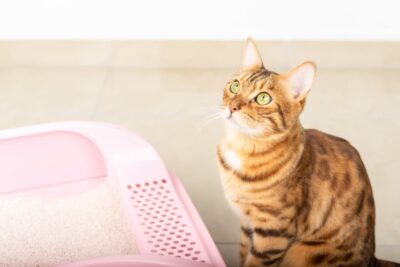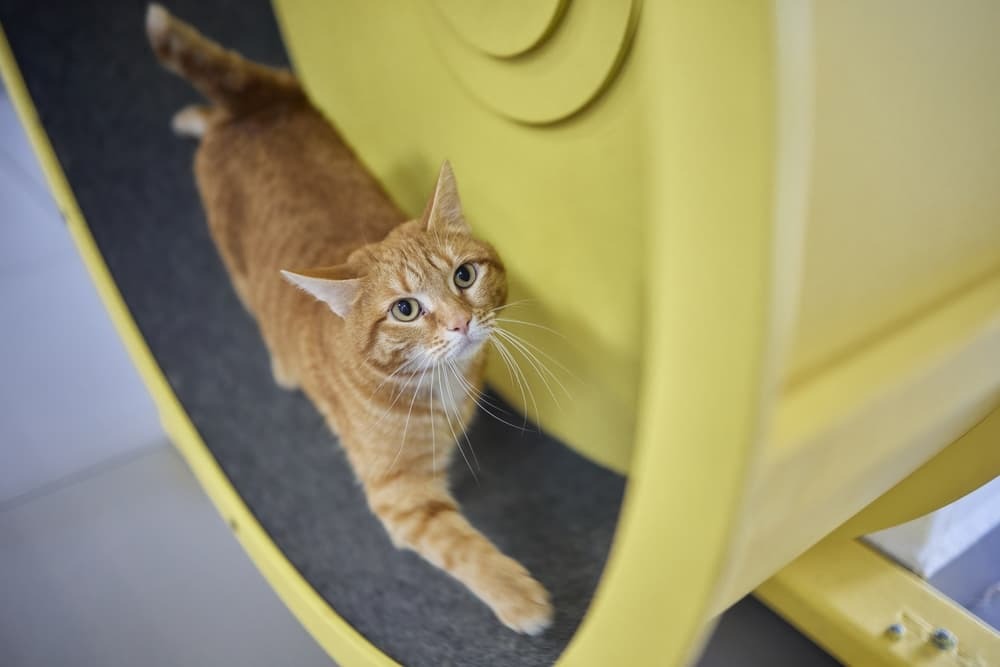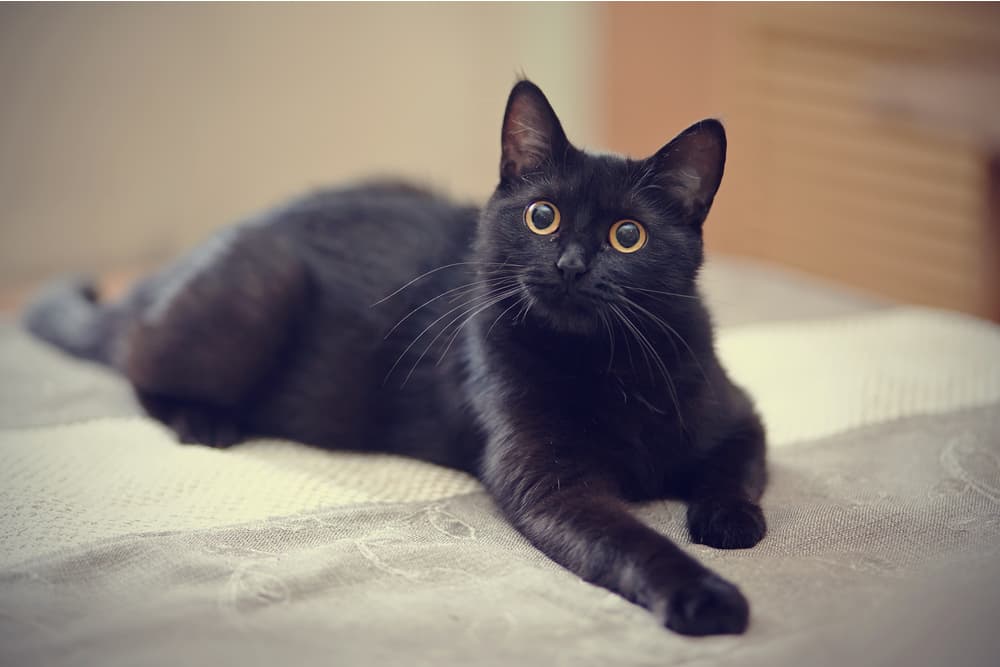Cat Dementia: Signs, Causes and Treatment Options
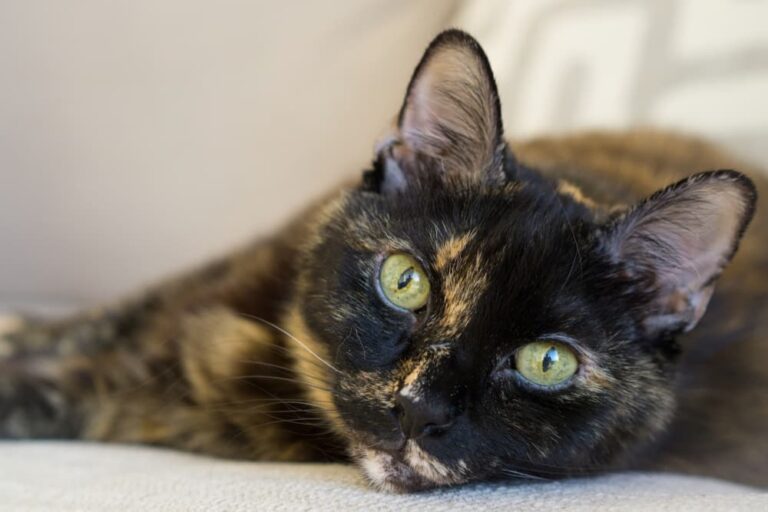
Cats thrive on routine. Many like eating at the same time, sleeping in the same spots, and using a certain litter box. But when they get older, some cats may begin acting a little differently. They may begin crying out at night, appearing confused, or peeing outside the litter box.
If your older cat is showing behavioral changes like these, they may be experiencing the onset of cat dementia, a neurological disease marked by a progressive impairment of cognitive function. While there is currently no cure for cat dementia, there are steps you can take to help your cat stay comfortable and content.
Can Cats Get Dementia?
Can cats go senile? Yes, absolutely. Cat dementia—known officially as cognitive dysfunction syndrome or CDS—is very similar to dementia or Alzheimer’s disease in humans. That’s because both cat dementia and human dementia “involve cognitive decline, memory issues, and behavioral changes,” says Dr. Gabrielle Fadl, director of primary care at Bond Vet in New York City.
While CDS doesn’t appear in all senior cats, it’s relatively common in the feline world. One study found that 28 percent of cats between the ages of 11 and 14 showed behavioral changes consistent with CDS (1). For cats over 15 years old, 50 percent showed signs of this condition.
Interestingly, dementia was only scientifically identified in cats in the early 2000s. Before that, cat dementia symptoms were dismissed as “old age.”
“It was identified in dogs much earlier, probably in the late ’80s and ’90s,” says Dr. Gary Landsberg, one of the clinical practitioners who first identified CDS in cats, who now works as a veterinary behaviorist at Fear Free Research and the veterinary scientific director at CanCog Inc.
“One of the reasons that dogs probably became a focus of cognitive research was because they were also being looked at as models for the human brain, aging, and Alzheimer’s disease in people,” he adds. “Cats came along a little bit later.”
There is still plenty to learn about CDS in cats, but experts now understand that it is a very real condition that requires specialized care.
What Causes Dementia in Cats?
The exact causes of cat dementia, or CDS, are unknown. However, researchers believe it can be triggered by degenerative changes in the brain, which can be brought on by old age, stress, or disease (2).
Signs of Dementia in Cats
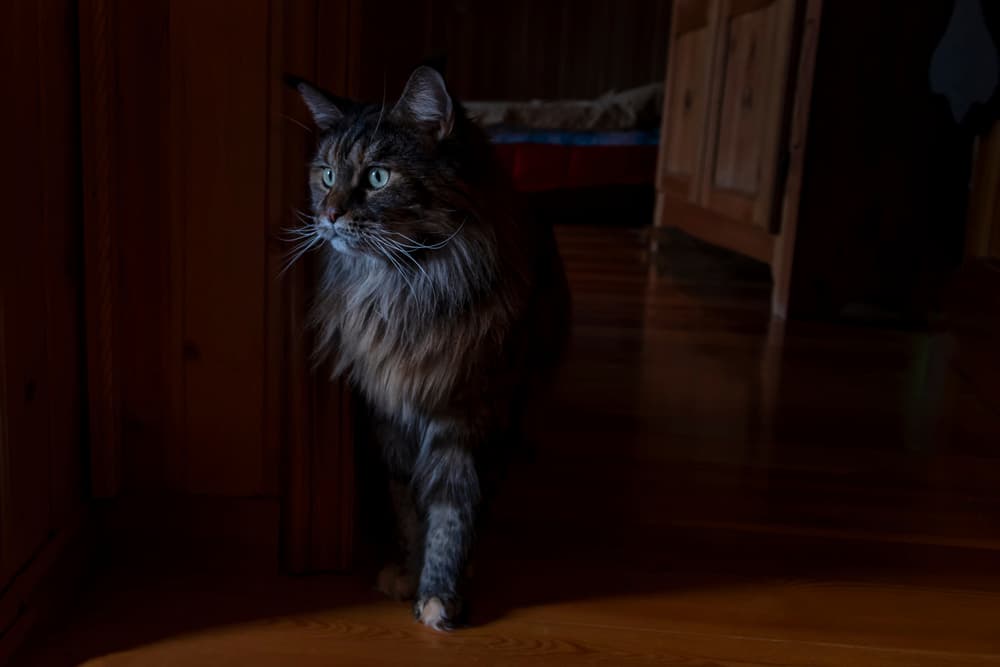
The acronym VISHDAAL refers to common behavioral changes in cats to watch for that could indicate cognitive dysfunction (2). This includes:
- Vocalization
- Alterations in interactions, such as increased affection
- Changes in sleep-wake cycles
- House-soiling
- Disorientation
- Changes in activity levels
- Anxiety
- Learning or memory deficits
“Disorientation might be not recognizing or not responding to stimuli the way they used to, going into rooms that they didn’t normally go to, or getting lost in the house,” Dr. Landsberg describes. “Whereas altered sleep-wake cycles could be waking more at night, sleeping more during the day, having restless or interrupted sleep, vocalizing at night.”
Diagnosing Dementia in Cats
Before giving a diagnosis of CDS, your veterinarian will first need to rule out the possibility of other medical conditions that could be causing behavioral changes in your cat, says Dr. Fadl. For instance, conditions such as hyperthyroidism, kidney disease, or brain tumors can present with symptoms similar to CDS, she says.
CDS is a “diagnosis of exclusion,” Dr. Landsberg describes.
“[CDS] may be alone, but it’s often compounded by other medical problems,” he says. “In diagnosis, sometimes we even do what’s known as ‘response to therapy.’ So if your cat is vocalizing and moving slowly, and we think it might be painful … we might put it on pain medication to see how many of those signs clear up or improve. And whether they do or don’t can indicate whether those cognitive signs are pain-related signs.”
According to Dr. Landsberg, it is important to rule out medical issues related to:
- Arthritis
- Sensory issues
- Endocrine disorders
- Gastrointestinal issues
- Metabolic (renal, hepatic) problems
- Cardiovascular diseases
- Urinary problems
- Drug effects
It is also important to exclude the possibility of behavioral changes due to stressors in a cat’s environment, such as moving to a new house or a change in their routine, Dr. Landsberg adds.
Cat Dementia Treatment
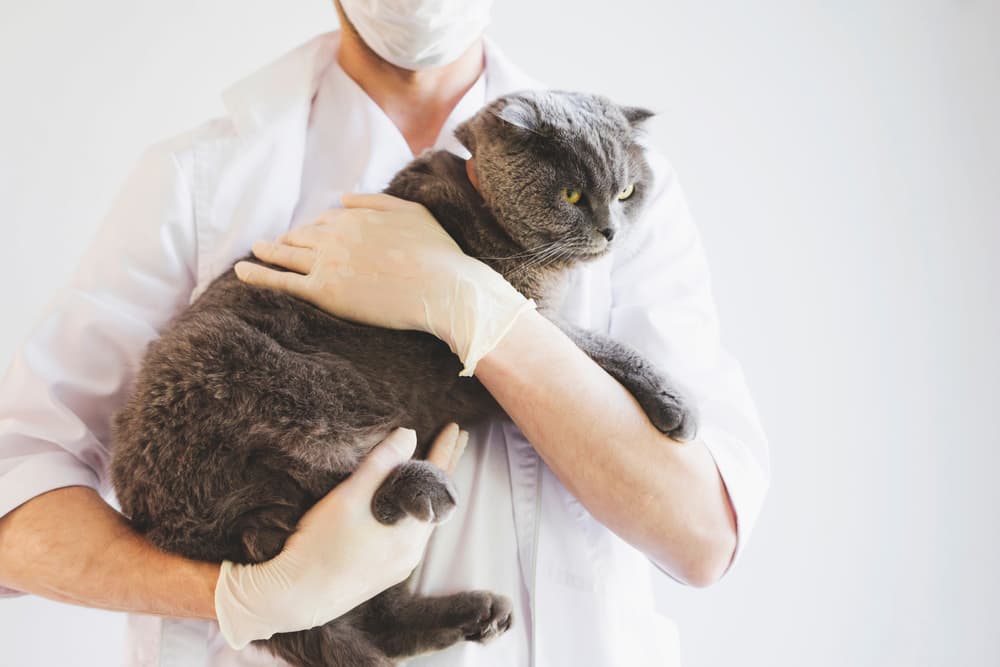
There are currently no FDA-approved drugs for cats with dementia. However, according to Dr. Landsberg, there are several approved medications for dogs, including selegiline, which has sometimes been used off-label in cats. There are also behavioral drugs such as gabapentin and pregabalin that can treat cat dementia symptoms like anxiety, irritability, and altered sleep.
There is evidence that certain supplements can help control signs of cognitive dysfunction in cats (2). “Special diets rich in antioxidants and omega-3 fatty acids may be beneficial,” says Dr. Fadl. “Supplements like SAMe and Coenzyme Q10 are also used to support brain health.”
Managing Cat Dementia
In addition to providing mental and physical stimulation for your cat, there are modifications you can make at home to help manage their condition.
Jane Ehrlich, a feline behaviorist based in Arizona and owner of Cattitude Feline Behavior, says one of the simplest things you can do is to install night lights around your house to help cats orient themselves.
“It’s not because of any ocular changes,” Ehrlich says. “It’s because the atmosphere has become a little more threatening because they can’t maneuver as well as they used to. My biggest thing is for them to feel more comfortable in the world.”
You can also try putting litter boxes in more places around the house to make them more accessible.
It is also helpful to maintain structure and to help your cat remain familiar with their world, says Ehrlich. “There’s nothing like familiarity to bust stress.”
Ehrlich suggests capturing the cat’s scent by rubbing a cloth on the pheromones around their face and then rubbing the fabric on new or moved objects in the house or new rooms the cat is now exploring.
“Some people find this odd, but it often works,” says Ehrlich. “When you move the chair, or you move anything a little bit, re-anoint the chair with the cat’s smell. If there’s a room that she goes into where she hasn’t before, rub the walls with her smell as high up as a cat can stretch.”
Ehrlich also suggests feeding your cat more frequent but smaller meals throughout the day to give them something to look forward to. You can also use food puzzles and try to play with your cat in a stimulating way, she says.
You shouldn’t necessarily introduce a new cat to the household when your cat has been diagnosed with CDS. According to Ehrlich, this can be stressful and disruptive to them.
Feline Dementia and Euthanasia
There are very few cases in which a pet parent would need to humanely euthanize their pet due to CDS, Dr. Landsberg says. The more likely reason for euthanasia would be other medical conditions such as kidney disease or cancer, he says.
“It’s unlikely, especially with proper support with the early diagnosis, and with combining cognitive dysfunction treatment with other medical treatments, that cognitive dysfunction will solely be the cause of having to euthanize,” he says. “You’re trying to improve their quality of life while they deal with other age-related problems.”
Feline dementia itself does not normally cause physical pain, Dr. Fadl adds. “Euthanasia decisions should be made in consultation with a veterinarian when a cat’s quality of life is significantly compromised, and the pet is experiencing distress.”
Preventing Cat Dementia
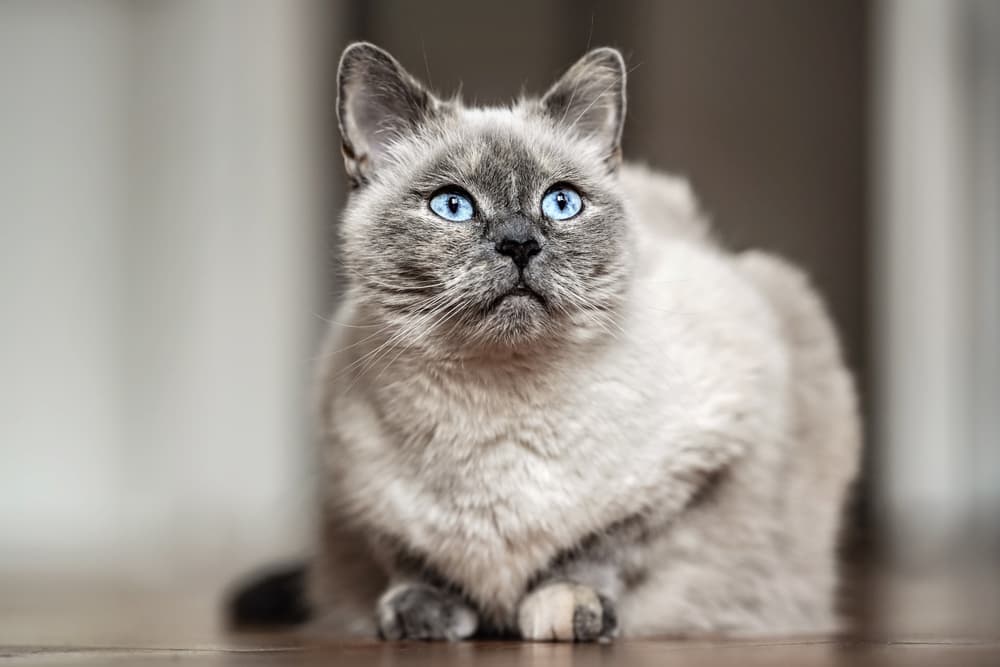
Cat dementia can be challenging to entirely prevent, especially when the exact causes are unknown. It’s also impossible to stop your cat from aging. However, Dr. Landsberg says there are things you can do to help slow your cat’s cognitive decline.
“There is evidence that brain enrichment, physical activity, and social interactions can help to keep the brain healthy and slow decline,” says Dr. Landsberg. “Obviously, you’re not going to have cats doing Sudoku and computer games, so you do what cats do and keep them physically, socially, and mentally active. And reducing stress is another one because stress can contribute to disease, cognitive decline, and other welfare issues for cats.”
To help your cat, you can engage them in play, give them affection, and keep them busy with games and food puzzles, Dr. Landsberg says.
Besides mental stimulation, Dr. Fadl says you can delay the onset of dementia by giving your cat a balanced diet and taking them to the veterinary clinic for regular check-ups.
“Regular veterinary check-ups for senior cats are crucial for early detection and management of cognitive dysfunction,” Dr. Fadl says. “Early intervention can often improve the cat’s quality of life.”
References
- Landsberg GM, Denenberg S, Araujo JA. Cognitive Dysfunction in Cats: A Syndrome we Used to Dismiss as ‘Old Age.’ Journal of Feline Medicine and Surgery. 2010;12(11):837-848. doi:10.1016/j.jfms.2010.09.004
- Sordo L, Gunn-Moore DA. Cognitive Dysfunction in Cats: Update on Neuropathological and Behavioural Changes Plus Clinical Management. Vet Rec. 2021 Jan;188(1):e3. doi: 10.1002/vetr.3. Epub 2021 Jan 12. PMID: 34651755.

